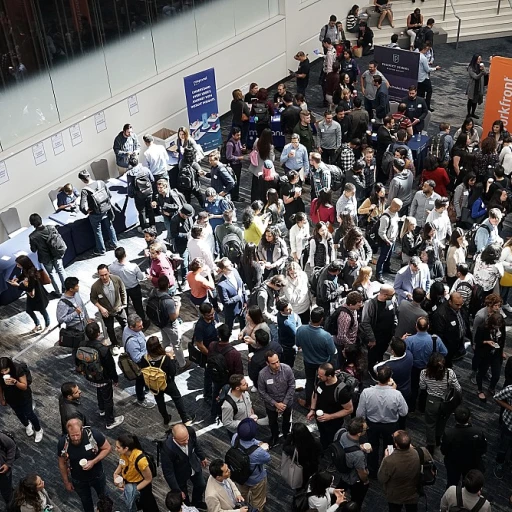
Understanding Interconnected IoT
Grasping the Essentials of IoT Integration
The Internet of Things (IoT) represents a monumental shift in our approach to technology, particularly in how devices interact within the workplace. At its core, IoT involves a network of connected devices that communicate and share data to enhance various operational processes. This seamless connectivity allows businesses to harness real-time data, paving the way for smarter, more efficient management systems. By deploying IoT solutions, organizations can establish interconnected systems where devices, sensors, and applications work harmoniously. This integration ensures that information can flow effortlessly across platforms, offering actionable insights that support decision-making. As IoT systems continue to evolve, the functionality of interconnected devices expands, enabling even more refined internet things applications applicable to diverse industries. However, managing a heterogeneous IoT landscape presents its own set of challenges. Diverse IoT devices, each with unique requirements and protocols, need to effectively communicate within a unified network. Continued advancements in IoT platforms and IoT applications are aiming to streamline this process, improving interoperability and performance. While the benefits of IoT are clear, attention must be paid to elements of security and privacy. As more devices become interconnected, safeguarding sensitive data and maintaining IoT security becomes imperative. Exploring the role of sentry hardware in modern workplaces can provide valuable insights into maintaining robust security measures when integrating IoT technologies.Enhancing Workplace Efficiency
Driving Workplace Productivity with IoT Technologies
In the modern workplace, the integration of interconnected IoT devices is revolutionizing how we understand and enhance workplace efficiency. Organizations are increasingly relying on IoT technologies to streamline operations and increase productivity.
One of the most significant benefits of using IoT platforms in the workplace is the ability to automate and optimize processes. Smart devices and sensors collect real-time data, enabling businesses to make informed decisions and reduce downtime. For instance, IoT systems in industrial settings allow for continuous monitoring of machinery, ensuring that equipment is operating efficiently and reducing the likelihood of unexpected breakdowns.
Additionally, IoT applications are transforming facilities management. Connected devices enable organizations to create 'smart buildings' that monitor energy consumption through IoT solutions. These systems can automatically adjust lighting and heating based on occupancy, resulting in both improved energy efficiency and cost savings.
The role of machine learning and artificial intelligence cannot be overlooked in the realm of IoT. By analyzing data collected from various sources, AI-driven IoT applications can identify patterns that lead to increased workplace efficiency. Predictive maintenance, driven by data from IoT devices, allows organizations to service equipment before it fails, minimizing costly downtimes.
Of course, it is crucial to ensure that interconnected systems are secure and resilient against potential breaches. As these IoT technologies become more prevalent, addressing security and privacy concerns becomes even more critical. Organizations must invest in robust security measures to protect sensitive data and maintain trust.
By leveraging the full potential of the Internet of Things, businesses can significantly boost workplace efficiency, cut costs, and stay competitive in an ever-evolving digital landscape. To delve deeper into the role of IoT and security, visit the exploration of sentry hardware in modern workplaces.
Boosting Collaboration and Communication
Improving Teamwork and Information Flow with IoT
In modern workplaces, enhancing teamwork and streamlining information flow is essential. Interconnected IoT plays a pivotal role in achieving this by leveraging connected devices and their ability to communicate in real time. Through IoT platforms, information can seamlessly traverse across various devices, allowing team members to collaborate effortlessly even from remote locations. Smart devices in office settings, such as IoT-enabled whiteboards and smart conferencing systems, facilitate innovative applications in collaborative environments. Such technologies harness the power of data from IoT devices to provide personalized and adaptive meeting experiences. With advancements in machine learning and artificial intelligence, IoT systems can analyze participant data to suggest relevant agenda items or follow-ups, significantly improving meeting productivity. Moreover, IoT solutions enable effective monitoring and management of asynchronous communication tools. By doing so, they ensure that vital information is accessible to all team members at any time, minimizing delays caused by time zone differences or scheduling conflicts. The heterogeneity of IoT networks allows for diverse device integration, ensuring that employees can use the tools they prefer without compromising on connectivity. Security and privacy concerns are critical when employing IoT technologies for communication and collaboration. Implementing robust IoT security measures ensures that sensitive data exchanged within the network remains protected against unauthorized access and potential breaches. To master the advanced capabilities of IoT applications in the workplace, it's worth exploring more about generative AI and its interplay with IoT technologies. Mastering generative AI can significantly impact how IoT systems enhance communication and collaboration. For guidance on this topic, check out this comprehensive mastering generative AI guide.Ensuring Security and Privacy
Establishing Critical Protection Measures
The rise of interconnected IoT devices is transforming workplace operations. Still, with great power comes great responsibility. IoT applications enable businesses to escalate efficiency and improve collaboration. Nevertheless, they must not compromise on security and privacy. Critical protection measures are indispensable in ensuring the safety of data and systems. The rapidly expanding internet of things network comes with a blend of challenges and opportunities. As you integrate more smart devices and sensors within your organization, exposure to security threats increases. Alongside the crafted benefits are vulnerabilities within network infrastructures that need prudent management. Comprehensive Security Solutions Smart technologies need strong IoT security solutions to safeguard organizational data. Ensure the devices on your IoT platforms are protected from unauthorized access by deploying robust security measures. Such protocols include:- Data Encryption: Encrypting data both in transit and at rest to protect sensitive information is crucial for ensuring safety in IoT systems.
- Regular Updates: Heterogeneous IoT systems demand frequent updates to address vulnerabilities in real-time, preventing breaches or unauthorized intrusions.
- Access Controls: Implement comprehensive access management to limit device interconnections, ensuring only authorized personnel benefit from IoT devices and technologies.
- Secure Communication Protocols: Utilize secure protocols to maintain constant monitoring and privacy, safeguarding against data leaks.











